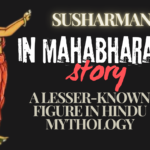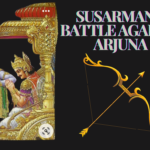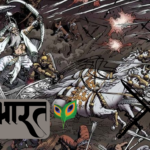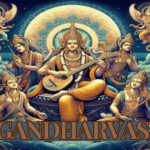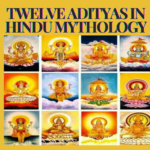In Hindu mythology, the Twelve Adityas hold a significant place as powerful deities who represent different aspects of the sun and its influence on life and the universe. The Adityas, a group of celestial beings, are regarded as sons of the goddess Aditi and the sage Kashyapa. Each Aditya symbolizes a distinct attribute of the divine, embodying various natural and cosmic principles. Understanding the Adityas provides a deeper insight into Hindu cosmology and its intricate beliefs about creation, preservation, and the cyclical nature of life.
Who Are the Adityas?
The word Aditya derives from the Sanskrit term “Aditi,” meaning “infinite” or “boundless.” The Adityas are described in the Vedic texts as solar deities who govern different aspects of the universe. They are often associated with the sun god Surya and are believed to represent the solar energy that sustains life on Earth.
Originally, the Rigveda mentions only six or eight Adityas, but later texts like the Mahabharata and Puranas expand their number to twelve, aligning them with the twelve months of the year, representing the solar cycle.
The Twelve Adityas and Their Significance.
Each of the Twelve Adityas represents a different manifestation of the sun, reflecting various facets of the divine order. Here is a detailed overview of the Twelve Adityas:
1. Mitra.
Mitra symbolizes friendship, harmony, and contracts. He is known as the deity of the day and is often invoked in conjunction with Varuna, the god of cosmic order. Mitra is responsible for maintaining societal bonds and relationships, ensuring cooperation and trust among individuals. In Vedic texts, Mitra is also considered the overseer of oaths and agreements.
2. Varuna.
Varuna is the god of cosmic law, water, and the oceans. As an Aditya, Varuna governs the moral and physical order of the universe. He is often depicted as a powerful god who punishes wrongdoers and rewards the virtuous. Varuna’s role extends to overseeing the waters of the world, symbolizing purity, justice, and the ethical principles that hold the cosmos together.
3. Aryaman.
Aryaman represents hospitality, nobility, and chivalry. As an Aditya, he governs social customs, rituals, and the laws of marriage. Aryaman is invoked in Hindu weddings as a symbol of fairness and integrity, ensuring that the bonds formed are sacred and lasting. He also represents the social virtues that sustain community life.
4. Bhaga.
Bhaga is the Aditya of wealth, prosperity, and fortune. He is responsible for distributing the bounty of nature and ensuring abundance among humanity. In Vedic literature, Bhaga is often associated with the dawn and the distribution of goods. He represents the divine aspect of wealth, reminding believers of the need to share and use resources wisely.
5. Daksha.
Daksha is the god of rituals and ceremonies. As an Aditya, he embodies the principles of order and discipline in performing religious rites. In Hindu mythology, Daksha is known for his role in various cosmic events, including his conflict with Lord Shiva. He symbolizes the importance of following dharma, or righteous conduct, in all actions and rituals.
6. Anshuman.
Anshuman represents radiance and luminosity. As an Aditya, he embodies the brilliance of the sun and the vital life force that sustains all living beings. Anshuman is associated with the physical and spiritual light that guides humanity, symbolizing clarity, wisdom, and enlightenment.
7. Surya.
Surya, the central solar deity, is often regarded as the most prominent of the Adityas. Surya represents the physical sun and is worshipped as the source of life and energy. In Hindu tradition, Surya is the driver of the cosmic chariot, traversing the sky and illuminating the world. He is often invoked for health, vitality, and spiritual awakening.
8. Savitr.
Savitr is the Aditya associated with the rising sun and the morning light. He is often invoked in the Gayatri Mantra, one of the most sacred prayers in Hinduism, which seeks divine guidance and illumination. Savitr represents the awakening of consciousness, the removal of ignorance, and the promotion of spiritual growth.
9. Pusha (Pushan).
Pusha is the protector of travelers, cattle, and flocks. As an Aditya, he is associated with nourishment and prosperity. Pusha guides souls on their journey through life and after death. He is invoked for protection during travel and for the safety of livestock and agricultural activities, embodying the nurturing aspect of the divine.
10. Vivasvan.
Vivasvan is the Aditya associated with the dawn and the renewal of life. He is often regarded as a forefather of humanity and is believed to be the father of Yama, the god of death, and Manu, the progenitor of humankind. Vivasvan symbolizes the cycles of life and death, regeneration, and the continuity of creation.
11. Tvashta.
Tvashta is the divine architect, the creator of forms and shapes. As an Aditya, Tvashta is responsible for crafting divine weapons and artifacts for the gods. He symbolizes the creative aspect of the divine, the ability to shape and mold reality. Tvashta represents the artistic and constructive forces in the universe.
12. Vishnu.
Vishnu, though primarily known as the preserver in the Hindu trinity, is also considered an Aditya. He represents the sustaining power of the sun, maintaining balance and order in the cosmos. As an Aditya, Vishnu embodies the qualities of protection, preservation, and the maintenance of cosmic law (Dharma).
The Role of the Adityas in Hindu Cosmology.
The Twelve Adityas are integral to Hindu cosmology, where they represent the cyclic nature of time and the universe. Each Aditya governs a month of the year, embodying the sun’s different aspects as it moves through the twelve months of the Hindu calendar. This association reinforces the idea of the sun as a vital force that governs the seasons, agricultural cycles, and spiritual growth.
Connection with the Twelve Months.
The connection between the Twelve Adityas and the twelve months is symbolic of the sun’s journey across the zodiac signs. Each Aditya presides over a specific period, influencing both the natural world and the spiritual realms. This belief emphasizes the harmonious relationship between cosmic forces and the cycles of life on Earth.
Worship and Significance of the Twelve Adityas.
Worshipping the Twelve Adityas is a common practice in Hinduism, especially among those seeking prosperity, health, and spiritual enlightenment. The Adityas are invoked during rituals, prayers, and festivals dedicated to the sun god Surya. Specific mantras and hymns are recited to honor them, seeking their blessings for various aspects of life, such as health, wealth, wisdom, and protection.
The Twelve Adityas occupy a crucial role in Hindu mythology, symbolizing different facets of the sun’s energy and its influence on life and the cosmos. As divine manifestations of various natural and cosmic principles, the Adityas remind us of the interconnectedness of all life and the need to honor the forces that sustain and govern our existence. Through their worship and understanding, one can gain a deeper appreciation of the divine order that permeates every aspect of life.
